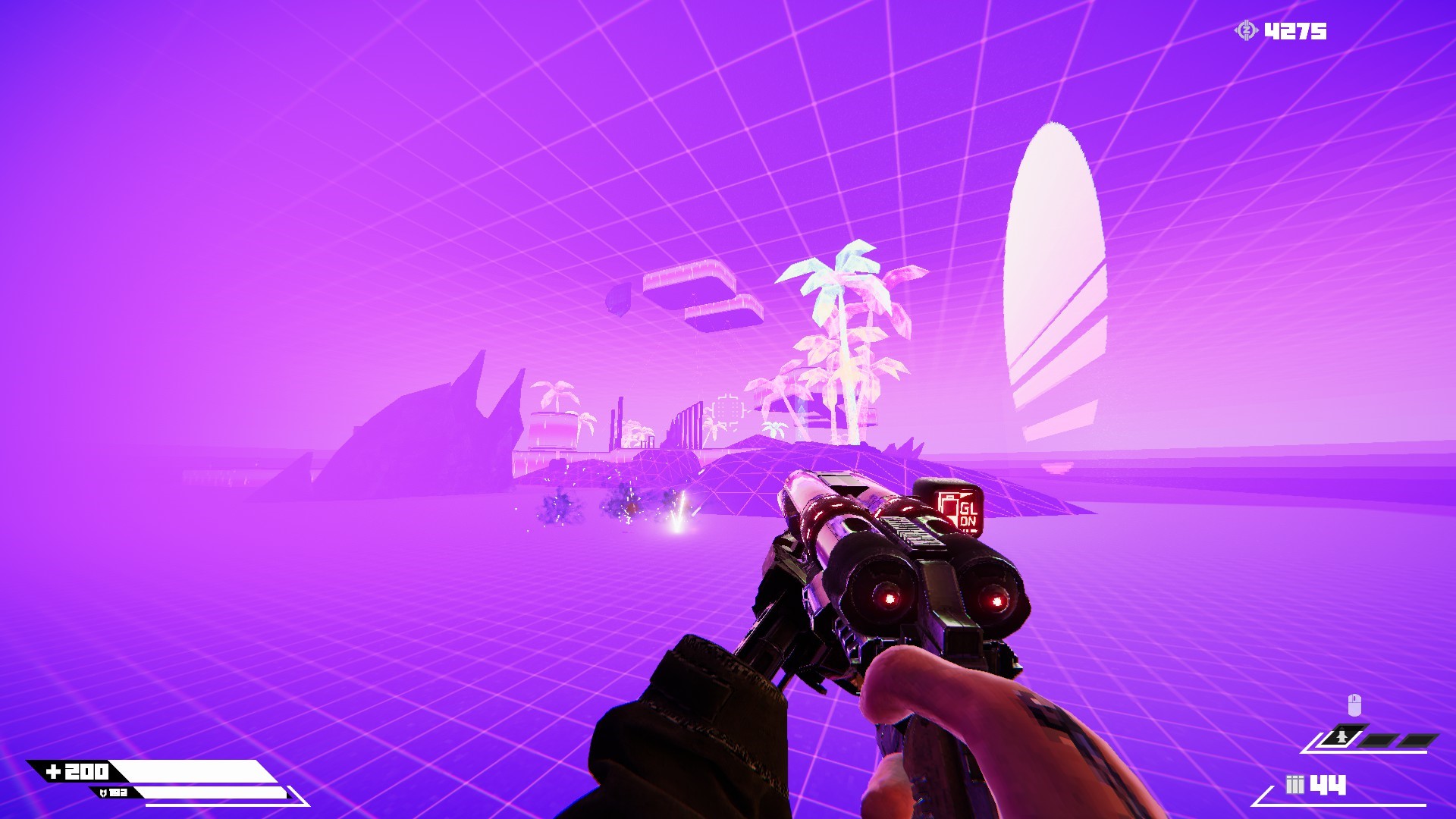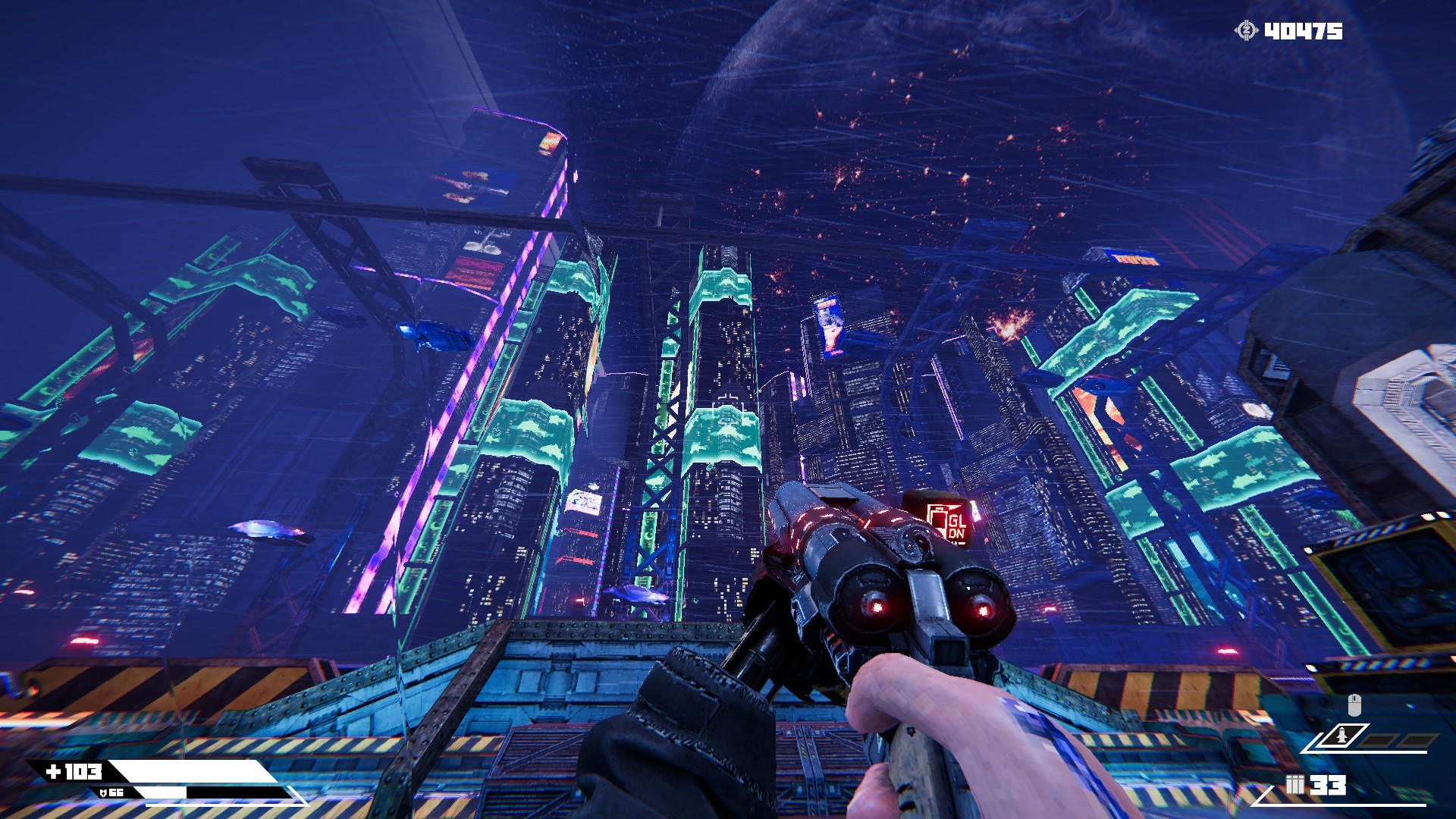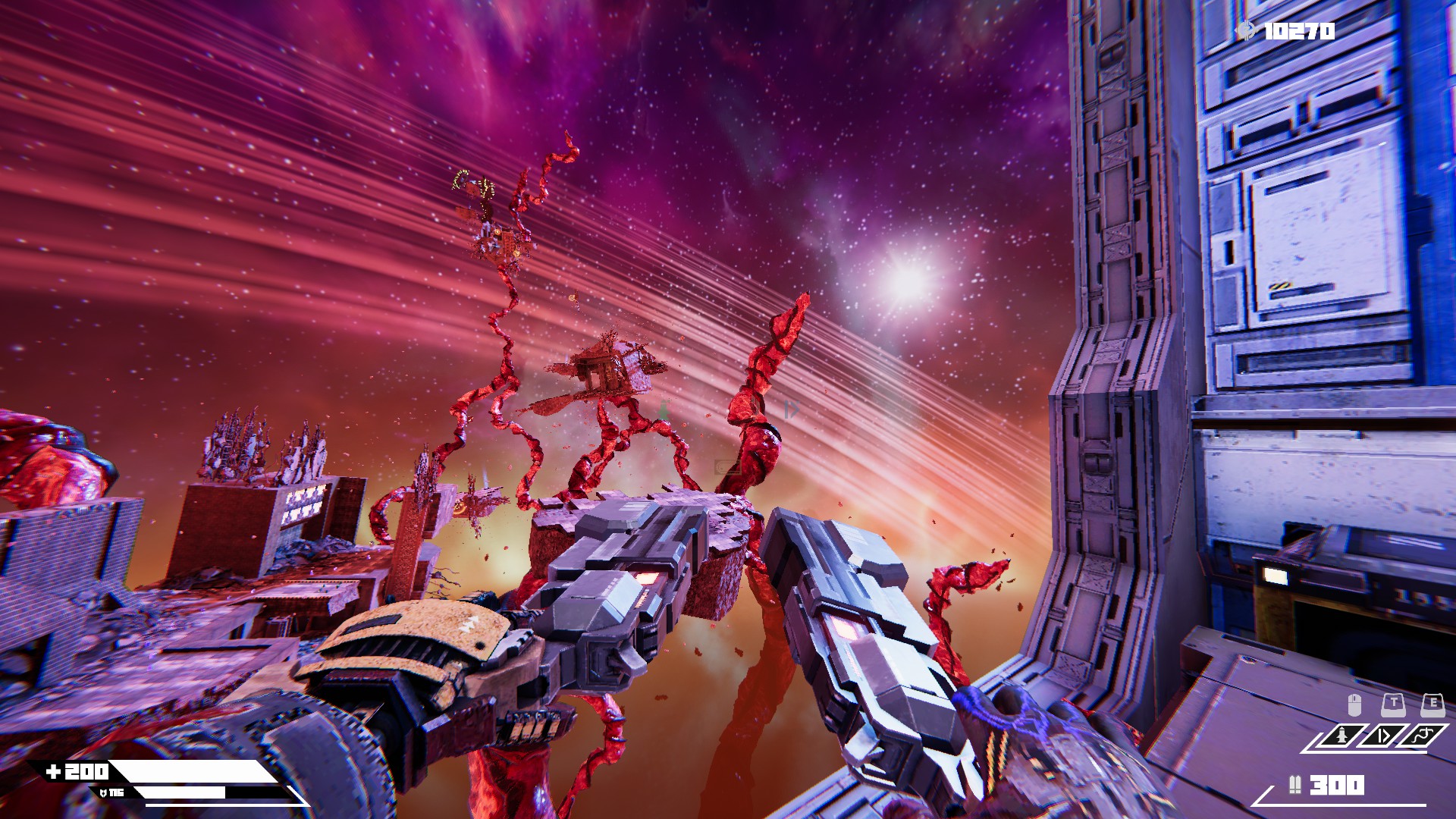Turbo Overkill review
2023-08-28 by Callum Andrews
Reviewed on
PCPlatforms
PC
Developer
Trigger Happy InteractivePublisher
Apogee Entertainment
Another one to the list
In recent years, the gaming community has been treated to a remarkable influx of high-quality shooters that have left us exhilarated. This welcome surge owes much to the relentless efforts of indie developers who've consistently delivered a stream of exceptional FPS titles. Among these standout offerings are unforgettable games like Dusk, Ion Fury, Amid Evil, and Project Warlock, each deserving of a spot in our playthrough list. While these years have been marked by a parade of excellent games, let's focus on the past year alone, which has blessed us with remarkable additions like Cultic, Prodeus, Trepang2, Impaler, and the topic of our discussion: Turbo Overkill.
If, like me, you've had the pleasure of immersing yourself in the majority of these titles, you'll likely have a solid grasp of their essence. While they certainly possess distinct flavours, they tend to adhere to a common formula that characterizes FPS games as a genre.
However, amidst this collective brilliance, one striking aspect that often stands out is the sheer extravagance some of these games exude. From the overwhelming hordes of enemies that flood the screen to the copious amounts of crimson spilt across every virtual battlefield, these games are unapologetically over the top. Add to that the larger-than-life bosses that punctuate the gameplay, as well as the borderline ludicrous arsenal of weaponry at players' disposal. At times, it almost feels like developers are engaged in a competition of one-upmanship, each aiming to outdo the others in audaciousness.
Amid this exhilarating chaos, a question arises: Can any game push the boundaries of extravagance further? Enter Turbo Overkill. This game not only boldly embraces but practically defines over-the-top action. The very name "Turbo Overkill" sets the tone, signalling an experience that's poised to leave an indelible mark. And rest assured, once you've journeyed through its intense gameplay, you won't soon forget it. Turbo Overkill isn't just a game; it's a symphony of audacity that's destined to resonate in your gaming memories.

Not wasting any time
This game has brought me to a whimsical realization: the epitome of coolness must unquestionably be the name "John." Why, you ask? Simply because in a world where characters like John Rambo and John Matrix reign supreme, it's only fitting to christen your protagonist John as well. Yet, in this extraordinary instance, he's christened as JOHN TURBO!!!! Or, as I affectionately dub him, John "The Chainsaw Leg" Turbo. Within the game's universe, you step into the shoes of John, a "fixer" employed by a major corporation. His mission: to neutralize a rogue A.I. named SYN, hell-bent on seizing control of the city of Paradise, and ultimately, the world itself. The onus to thwart this insidious plot falls squarely on your shoulders.
But that's merely the tip of the narrative iceberg. The story unfurls in unpredictable directions, a rarity in this genre but a most welcome departure. Don't anticipate it taking center stage, though—narrative in FPS games often plays second fiddle to the unrelenting symphony of gunfire. And rest assured, there will be no shortage of bullets fired. While your primary method of dispatching foes revolves around firearms, John isn't limited to mere pew-pew action. Beneath that flesh-and-blood exterior lies a man augmented with metallic marvels, including a chainsaw embedded within his leg. Once unleashed, this buzzsaw appendage transforms John into a gliding harbinger of evisceration, cleaving through anything unfortunate enough to cross its path. John's capabilities don't stop there; he's also adept at dashing and executing double jumps. As you progress, he acquires a bevvy of additional abilities, each poised to play a pivotal role at specific junctures.

Platforming sections within FPS games have never ranked high on my list of favourites. Still, I understand their inclusion, serving as a refreshing break from the ceaseless barrage of gunfire. When I last covered this game during its early access phase, I expressed reservations about the platforming elements. I'm pleased to report that substantial improvements have been made since then. Chief among these is the checkpoint system, which has undergone a remarkable overhaul. A misstep no longer necessitates a frustrating backtrack; you're swiftly returned to the onset of the platforming challenge. Moreover, my proficiency with these segments has undoubtedly improved over time. Despite not having laid hands on the game since my previous encounter, some form of muscle memory undeniably kicked in.
Remember, John isn't all flesh and bone; he's been artfully enhanced with an array of augments. Initially restricted to his legs, these enhancements eventually extend to his arms and even his head. Serving as passive complements to his innate abilities, these augments furnish him with heightened damage output for his chainsaw leg. Others generate a boon wherein fallen adversaries yield health or ammunition upon expiration, and this list barely scratches the surface. While I wouldn't venture to assert that every augment is indispensable, discerning their utility shouldn't pose an insurmountable challenge.

Full speed ahead
The game surges forward with an unyielding tempo that never relents, steadfastly driving onward until the credits roll. At times, I find myself yearning for it to pause, if only briefly, as the environments traversed are breathtakingly picturesque. Regrettably, the game scarcely affords the luxury of basking in their beauty, for it propels you from one heart-pounding encounter to the next in a relentless cascade. Facing these challenges mandates a reliance on your arsenal of firearms and the infamous chainsaw leg, bolstered by an array of additional tools unveiled as you progress. Among the weapons on offer, you'll encounter the expected assortment: shotguns, machineguns, and rocket launchers, to name a few. Yet, Turbo Overkill introduces a unique twist by introducing innovative variants hitherto unseen. A prime example is a late-game "weapon" that beckons "aerial strikes." To employ this, you merely target foes, whereupon a laser emanates from the heavens, converging upon your designated mark. Importantly, every firearm within the game is subject to upgrades, further enhancing their capabilities and expanding your tactical repertoire.
Assume not that the entirety of the game can be conquered relying solely on a scant few firearms. Adapting to an evolving roster of enemies demands nimble swaps between weapons, with astute selection being paramount. The chainsaw leg, too, should be strategically wielded to maximize its impact. Turbo Overkill draws inspiration from a diverse lineage of shooters that have come before (a trend common in today's FPS landscape). A central tenet mirrored from its predecessors is the imperative of perpetual movement. This principle holds true for the majority of the game's skirmishes, echoing the recent entries in the Doom franchise. Remaining stationary is tantamount to courting swift demise. Nonetheless, the specter of death carries a diminished sting, owing to the game's merciful checkpoint system. Additionally, quicksave functionality empowers you to revert to a state just before your untimely demise. In terms of difficulty, I'd strongly encourage those with even a modicum of FPS proficiency to opt for the more challenging settings, as my experience on normal mode felt almost like a leisurely stroll. It's worth noting that this proclamation comes from one who considers themselves proficient rather than exceptional in the FPS arena.
The game's aesthetics paint a vivid tapestry worthy of admiration. When I conjure the essence of cyberpunk, Turbo Overkill effortlessly epitomizes the very essence of the term. Among the game's episodes, my heart resonates most with the inaugural instalment. The city of Paradise and its expansive vistas left an indelible impression, though this is by no means a slight to the subsequent chapters. My preference for the initial episode stems from the visual allure and ambiance that captivated me. This isn't to diminish the latter stages of the game, which present their own captivating environments.
Complementing the visuals, the soundtrack strikes all the right chords, crafting a pulsating rhythm that mirrors the game's unrelenting nature.
Regrettably, the game does harbour a few shortcomings—some of a technical nature and others inherent in its design. In later segments, certain platforming sections embrace a level of inventiveness that, while intriguing, can devolve into bouts of trial and error. Instances require hurling oneself into the abyss, mid-air contortions leading to snap decisions on the next move. A more refined execution could have averted these instances of frustration. The game's technical flaws manifest during moments when it falters to sustain its own momentum. There were times when dashing or sliding left me ensnared within the environment, with one instance leading to my unintended descent through the game world. On another occasion, a formidable adversary struck such a mighty blow that I plummeted through the terrain. Of note is a particularly egregious flaw experienced on the final level, where a restart in a specific area rendered foes invisible—inflicting damage with unseen assailants. Despite numerous reloads at checkpoints, the resolution only came through replaying the entire level.
Setting these issues aside, Turbo Overkill stands as an essential experience for nearly all gamers. Yet, anticipate an expedition that permits no respite—a white-knuckle journey lasting approximately 15 hours. Expect not to walk away unscathed; exhaustion beckons when a game that embraces turbocharged intensity commences and concludes in a frenetic whirlwind.
Turbo Overkill is a wild ride that won't let up all the way up until the end credits, but it's a ride worth taking.